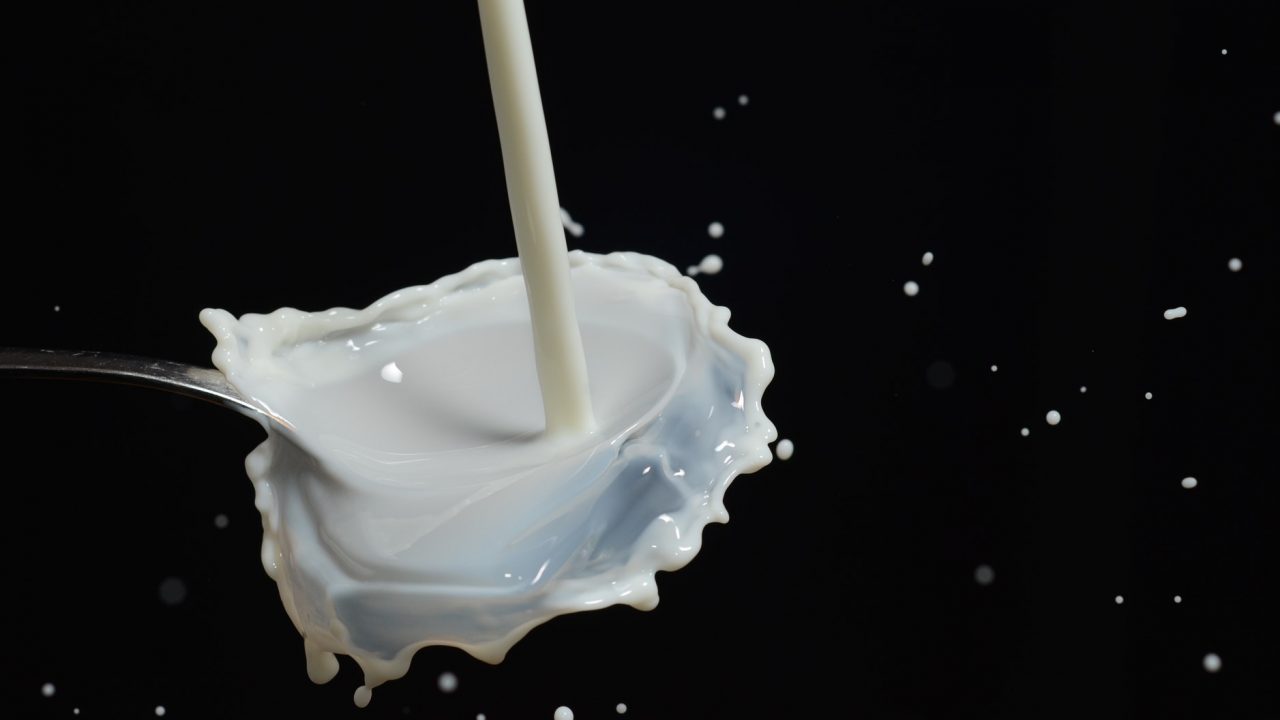How is Whey Protein Made?
During cheese processing, milk is separated into curd, a solid, and whey, a liquid. Whey protein is the protein contained in the liquid by-product. This liquid can then be processed further to reduce its carbohydrate and fat content and then turned into powder form.
Whey protein is considered a complete protein, containing all nine essential amino acids. The muscle health benefits of whey protein powder make it a popular supplement among athletes, bodybuilders, fitness models, and even casual gym-goers who are looking to build muscle mass, improve muscle tone, and/or lose fat.

The Process of Making Whey Protein
The process begins at a cattle farm. Milk is typically collected from cows three times a day and stored in sterilized containers for transportation to a manufacturing facility. The milk is tested for safety when it arrives at the facility and then it is heated (pasteurized) to kill any pathogens. If the milk meets safety standards, it undergoes processing to make cheese. Enzymes are added to the milk to separate the solid curd and liquid whey.
The liquid whey is further filtered to remove the fat and lactose, thereby producing liquid whey protein concentrate. The liquid concentrate is then dried to produce whey protein powder.

Types of Whey Protein
Liquid whey can be processed in different ways to produce four types of whey protein powder as determined by their protein-fat-lactose ratio: concentrate, isolate, hydrolysate, and native.
Whey protein concentrate, or WPC, is produced from the first step in the process of making whey protein. It contains between 70% and 80% protein and the remaining is made up of lactose and fat. The lactose gives WPC added health benefits from bioactive compounds.
Whey protein isolate is produced by removing most of the lactose and fat so that it contains 90% protein. With less lactose, the levels of health-boosting bioactive compounds are much lower.
Whey protein hydrolysate or hydrolyzed whey is produced by pre-digesting and partially hydrolyzing (adding water to) whey protein. The process breaks down the compounds in whey protein so that they can be more easily digested and utilized by the body.
Native whey protein is derived from skim milk and is, therefore, in its purest form. It contains 95% protein or higher.
Benefits of Whey Protein
Compared to other proteins, whey protein is rapidly digested and utilized after consumption; it enters the bloodstream and gets to the muscles quickly. This makes whey protein an ideal supplement for muscle recovery and growth, especially after a workout. Athletes, bodybuilders, fitness models, and casual gym-goers often take whey protein to support their performance and muscle health.
During and after resistance training and other similar workouts that cause muscular damage, the muscles require a lot of amino acids to repair the damage and grow new muscle tissue. Taking whey protein during and immediately after a workout ensures that amino acids are readily available for the muscles to use as building blocks when needed.
The ideal time to consume whey protein powder is after a workout, as this is the time when the muscles need it most. During the recovery process, your bloodstream will be flooded with amino acids from the whey protein powder. The amino acids will then be carried into the muscle cells where they’ll be used in building new muscle tissue, serving as building blocks and as a boost for anabolic hormones, which stimulate muscle growth.
The powder can be consumed in a shake within 30 minutes post-workout. Whey protein powder can also be consumed by mixing it in yogurt, pancakes, or oatmeal.
The process of muscle repair and growth also burns a lot of calories from fat. Providing adequate support to the muscles by supplementing with whey protein, therefore, can also boost weight-loss efforts. Additionally, protein aids in weight loss by increasing satiety levels when consumed, reducing cravings, and boosting energy requirements by 80 to 100 calories per day.

Whey Protein – Final Thoughts
Adding whey protein to one’s daily food intake can provide benefits in muscle growth and strength and in weight loss. Other health benefits include reducing blood pressure levels, blood sugar levels, and symptoms of stress and depression. This high-quality protein has also been shown to increase bone mineral density, reduce symptoms of hepatitis, protect against cancer, and improve immune function in HIV patients.
However, it should be noted that a person’s daily protein requirements can and should be derived directly from food. While it also contains other nutrients, whey protein should only serve as a supplement to the diet; it should not be the main source of daily protein. Otherwise, the diet will be severely lacking in other essential minerals and nutrients.
Supplementing with whey protein is ideal for individuals who are physically active and are looking to gain muscle mass, improve muscle definition, and/or lose weight. Protein is the most beneficial macronutrient when it comes to muscle gain and fat loss, and whey protein is the best source of high-quality protein supplement.
For a lifetime of fitness and health, it is vital that you adopt lifestyle changes that suit you. With Modern Fit‘s 16-week course that is tailored to your specific needs, you’ll learn how simple it is to live more healthfully.


